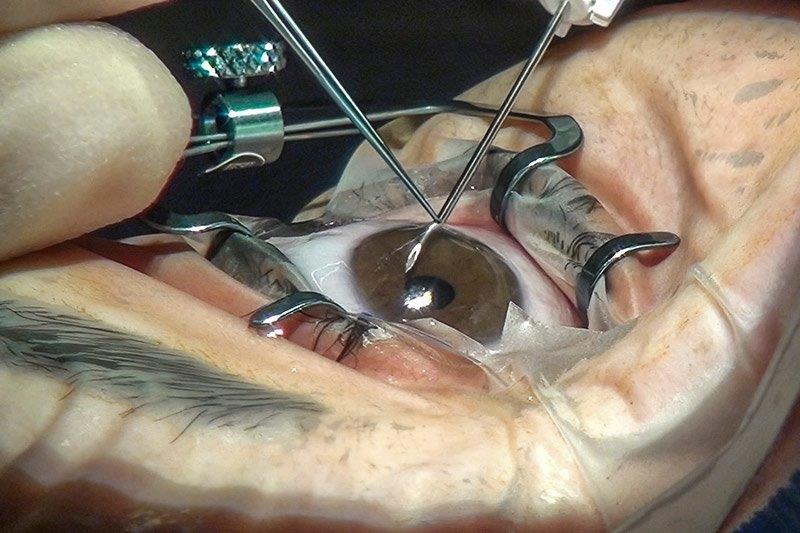A Safe and Effective Treatment for Ocular Hypertension and Glaucoma
Selective Laser Trabeculoplasty (SLT) is a minimally invasive laser treatment. It is used to lower intraocular pressure (IOP) in individuals with ocular hypertension (OHT) and open-angle glaucoma (P.O.A.G.). First introduced in the 1990s, SLT is now widely used as a primary or adjunctive treatment to medication. It is valued for its effectiveness, safety profile, and repeatability. All these are making it a favorable option for those looking to control IOP without daily medications.
How SLT Works
SLT targets specific cells in the trabecular meshwork, the eye’s natural drainage system, to improve fluid outflow and reduce IOP. Using short, low-energy laser pulses, SLT selectively treats pigmented cells without causing damage to surrounding tissue. The laser’s energy stimulates a biochemical reaction that improves the flow of aqueous humor, allowing pressure in the eye to decrease.
The Treatment Procedure
The procedure takes place in an outpatient setting. A nurse will begin by checking your vision and administering eye drops to control eye pressure and reduce pupil size. These drops may cause a temporary headache and generally take about an hour to take full effect. A doctor will then obtain your written consent and answer any additional questions you may have.
When seated at the laser machine, which resembles the microscope used during your eye exams, anaesthetic drops will be applied to numb the front of your eye. A special lens is gently placed on the eye’s surface; while this isn’t painful, it may feel slightly unusual. During the laser treatment, you may notice flashes of light and hear soft clicking sounds. The procedure is quick and painless, typically lasting about 5-10 minutes.
About an hour after the procedure, your eye pressure will be rechecked. You will receive a prescription for anti-inflammatory eye drops to use at home over the next five days. A follow-up appointment will be scheduled, typically one to two weeks later, to ensure your eye is healing well. While initial effects may be noticed sooner, it may take up to eight weeks for the full benefits of the treatment to become evident.
Safety and Side Effects
SLT is generally safe, with a low risk of complications. As a non-thermal laser treatment, it minimizes damage to surrounding tissue, unlike previous laser techniques such as Argon Laser Trabeculoplasty (ALT). SLT’s side effects are mild and temporary. Some patients occasionally experiencing mild inflammation, eye redness, or slight discomfort immediately following the procedure. These symptoms typically resolve within a few days with the use of anti-inflammatory eye drops. Rarely, patients may experience a temporary spike in IOP, which is usually manageable with medication. IOP spikes seen after SLT treatment were observed more frequently in dark colored eyes or in eyes with heavily pigmented angles. SLT is considered a safe option for patients who cannot tolerate glaucoma medications or are unresponsive to them.
Success Rate and Efficacy of SLT
Studies show a 78% success rate for SLT, with some patients responding well to the treatment, making SLT highly effective in reducing IOP. According to recent studies, SLT lowers IOP by an average of 20-30%, comparable to first-line glaucoma medications. SLT’s effect on eye pressure may take a few weeks to fully develop, and the duration of effectiveness varies by individual, generally lasting between 1 and 5 years. Repeat treatments are possible if the IOP begins to rise again, as SLT does not cause structural damage to the eye.
A landmark study known as the LIGHT (Laser in Glaucoma and Ocular Hypertension) trial, published in 2019 and updated in 2023, found SLT to be equally as effective as eye drops in controlling IOP for initial glaucoma management. Moreover, SLT patients had better adherence to treatment and required fewer follow-up appointments than those on medication, making SLT a convenient option for many individuals.
Repeatability of SLT
One of the advantages of SLT is its repeatability. Since SLT does not cause structural damage to the trabecular meshwork, it can be repeated when the initial effect wears off. While effectiveness may decrease with each subsequent treatment, studies indicate that repeated SLT can still produce significant IOP reduction. In return, patients are provided with a long-term, medication-free approach to managing their condition. Glaucoma specialist usually stop after 3 rounds of SLT surgery, as there is not enough data to support effects after that point.
Is SLT Right for You?
SLT is an effective and safe option for many individuals with ocular hypertension and open-angle glaucoma. It provides a non-invasive, medication-free alternative to control eye pressure, with the convenience of being repeatable. The latest research supports SLT as a reliable option, either as a first-line treatment or in conjunction with other therapies. Patients interested in SLT should consult with their eye care specialist to discuss their unique case, as treatment efficacy can vary. Regular monitoring is essential to ensure that IOP remains controlled, preserving vision and quality of life over the long term.
Remember, while no glaucoma treatment can restore lost vision, various options are available to help preserve what’s left. Consult your doctor and see what’s the best treatment for you.

